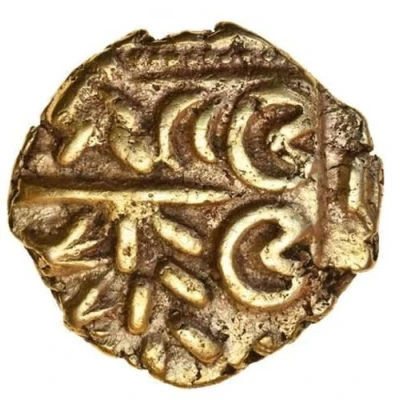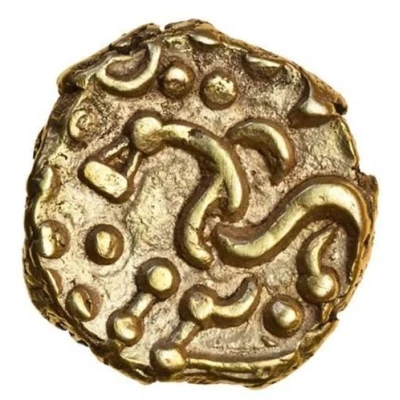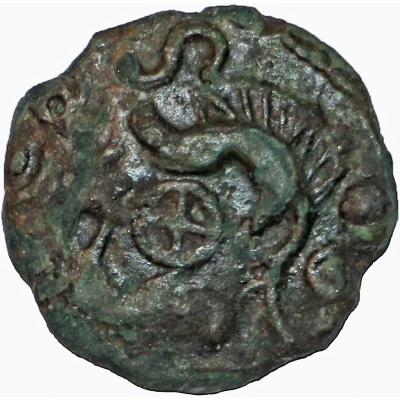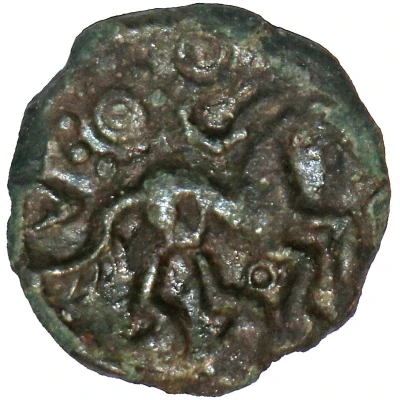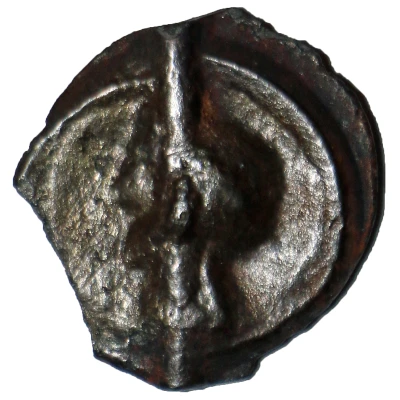
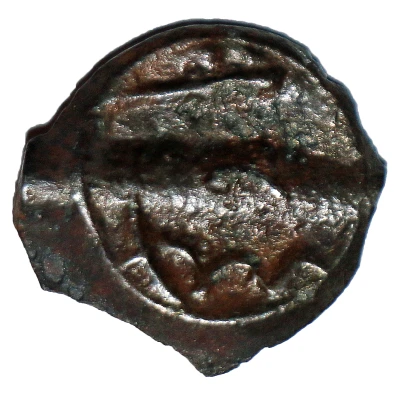

Potin Unit "Trinovantian A" 100 BC - 90 BC
| Potin | 2.83 g | 15 mm |
| Issuer | Uncertain tribe Brittonic (Celtic Britain) |
|---|---|
| Type | Standard circulation coin |
| Years | 100 BC - 90 BC |
| Currency | Stater |
| Composition | Potin |
| Weight | 2.83 g |
| Diameter | 15 mm |
| Shape | Round (irregular) |
| Technique | Cast |
| Orientation | Variable alignment ↺ |
| Demonetized | Yes |
| Updated | 2024-10-09 |
| Numista | N#228370 |
|---|---|
| Rarity index | 90% |
Reverse
Crude bull butting right
Comment
Early Uninscribed Coinage (c.120-c.50 BC)Thurrock type, mainly Kentish BMC 660-666
Potin is a base metal alloy used in ancient coins, typically a mixture of copper, tin and lead. While the term billon is more commonly applied to ancient Roman coinage, potin is usually used for Greek or Celtic coinage
The appearance of cast bronzes in Cantian territory, around 100 B.C. prompted the tribe to cast their own bronzes for a brief time. These coins, the Thurrock Types, are distinguished from the Kentish pieces by the mould-manufacturing methods and typology. The sprues and runners were produced by pressing a dowel across the mould. This created a deep runner system, which filled the cavities well, but interfered with the images on the coins. Almost all Thurrock Types have the sprues running across the image in a raised line.
Whilst Spink shows just one reference for the Thurrock type, Van Arsdell lists some 18 different varieties for these early cast bronzes varying from V#1402, with clear definition of obverse and reverse images, to the degraded V#1442 with little more than blobs and lines on both sides.
Interesting fact
One interesting fact about the Trinovantian A coin is that it features a unique reverse design that depicts a stylized horse and rider, which is believed to represent the tribe's mythological ancestor, Trinovantian, who was said to have been brought to Britain by the Trojan prince, Brutus. This design is not found on any other coins of the time, making it a distinctive feature of the Trinovantian A coin.
